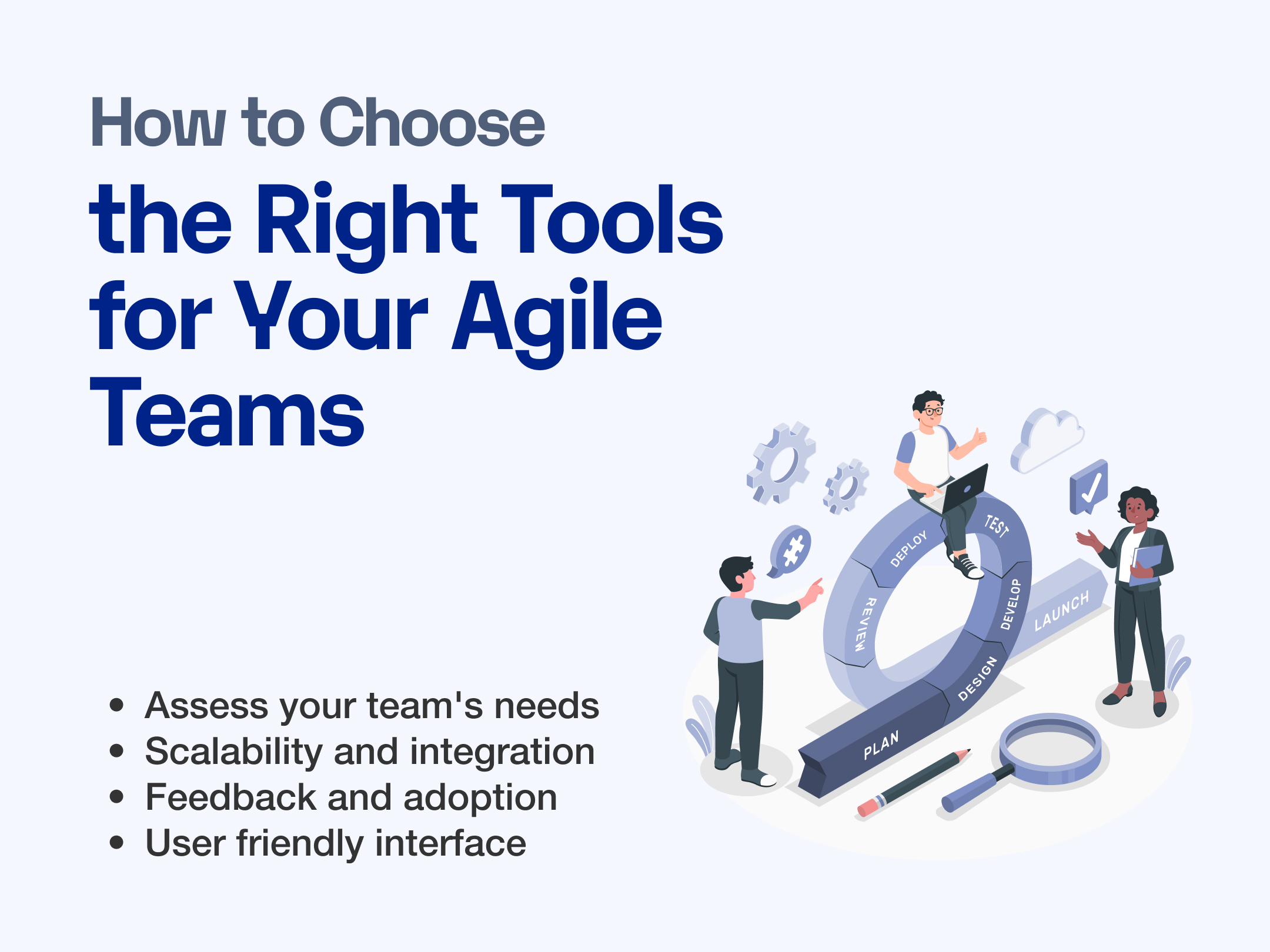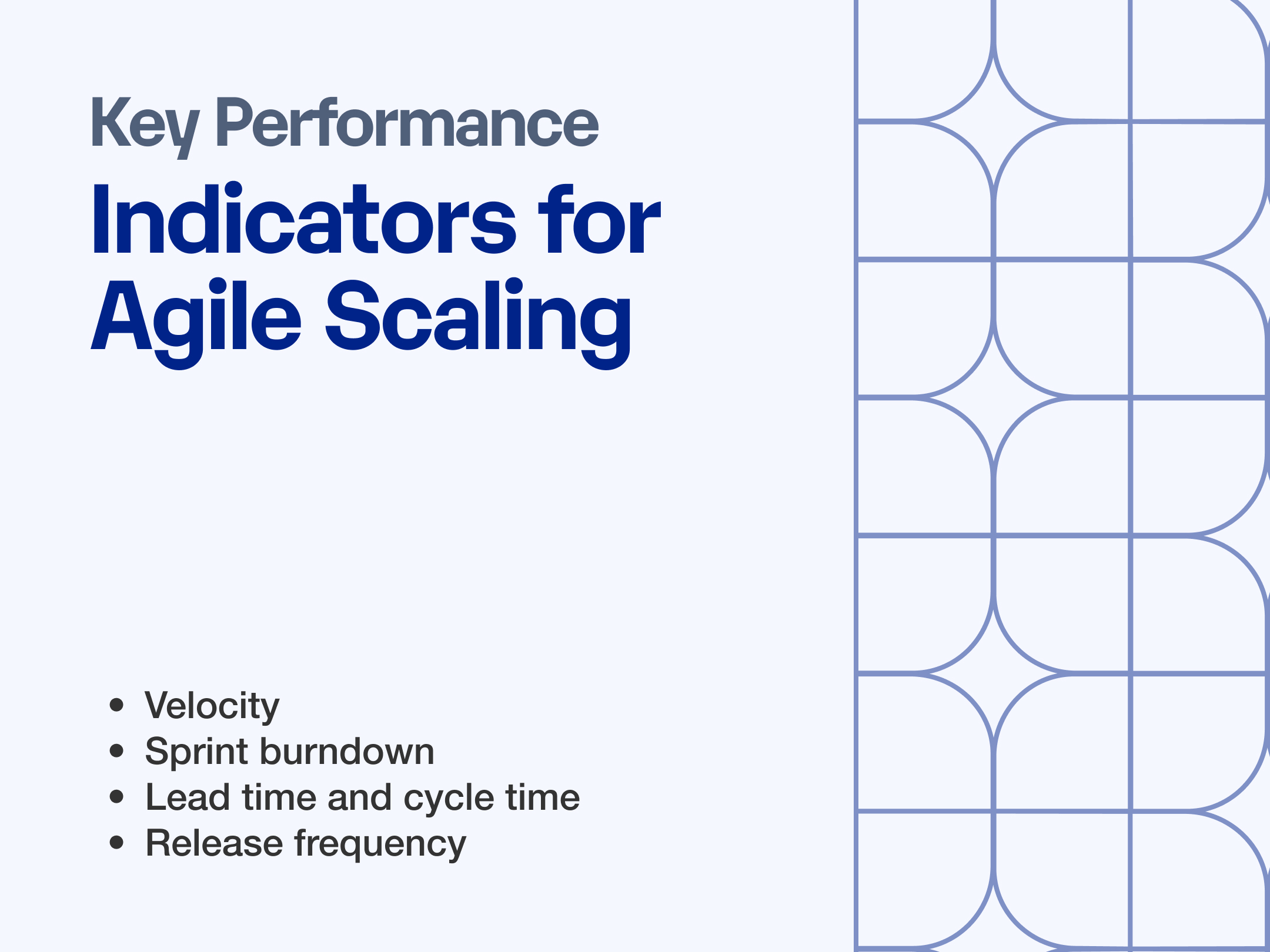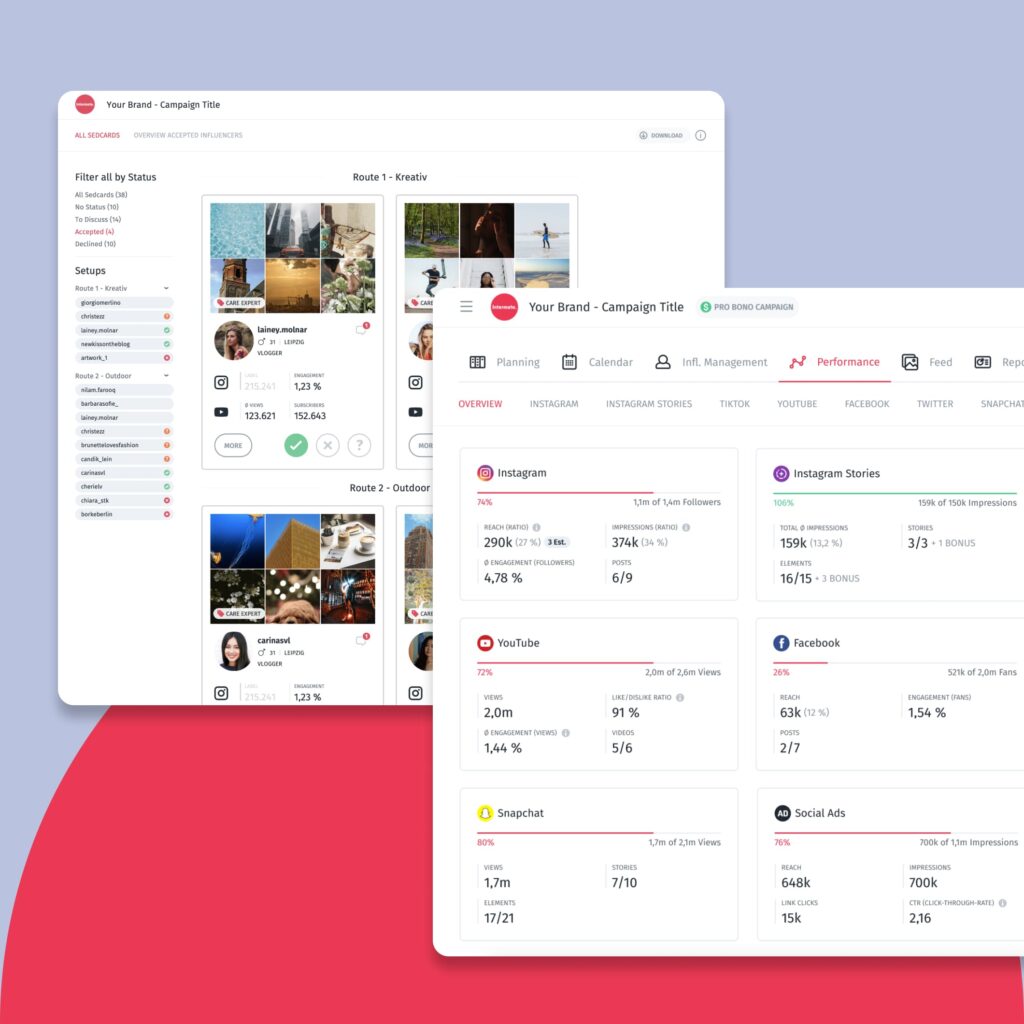Blog
How to Scale Your SaaS Business Using Agile Methodologies

Introduction
So you have managed to get your software business from the startup stage, where you’ve now validated your idea, achieved some traction and you now have a user base that is using your product. Congratulations!
As you already know scaling a SaaS business is not easy. There are a lot of companies that never get to product market fit.
However, once you do, scaling efficiently is one of the biggest challenges.
At Trustshoring, one of the most common problems we see when clients come to us is the failure to recognize that with scaling comes a need to restructure and re-organize your product development processes and even your team structure to remain effective.
In today’s article, we will explore how companies can use the principles of Agile to not only streamline their development processes but also structure teams to enhance team collaboration.
Understanding the Scaling Challenge in SaaS
Scaling a SaaS is an exciting yet challenging endeavor, especially when it comes to making that transition from the MVP stage to pursuing expansive growth.
This phase is very crucial and it’s important to understand that you’ll need to change a few things to make this transition.
So what are some of the common challenges that software businesses face when they start to scale?
Maintaining Product Quality – As the user base and feature requests start to accumulate, maintaining the original product quality and integrity becomes more challenging
Managing Customer Experiences – New clients also come with their demands and expectations. This requires a scalable approach to customer service and support.
System Scalability – Ensure your technical infrastructure can handle increased loads without affecting the performance.
Team Expansion and Culture – Rapid team growth can dilute company culture and values if the right processes are not in place to onboard and integrate new team members.
Cash Flow and Financial Management – A growing user base and team means that the company has to now balance investment in growth and maintaining a healthy cash flow.
Using Agile Methodologies to Scale Your SaaS
Agile methodologies have emerged not only as a way to build software but also as a guide on how to run entire organizations.
Agile is grounded in the idea of iterative development, where solutions evolve through a collaborative effort.
It promotes adaptability in planning, evolutionary development, early delivery, and continuous improvement. There is also an encouragement for rapid and flexible responses to change.
The three key components of Agile include:
- Scrum: A framework that facilitates team collaboration on complex projects, breaking them down into manageable sprints with clear goals and deliverables.
- Kanban: A method focusing on visualizing work, limiting work in progress, and maximizing efficiency (or flow).
- Lean: An approach that values customer feedback and iterative design in the development process to minimize waste and focus on value creation.
What are the benefits of Agile in scaling a business?
Flexibility and responsiveness – An agile approach allows for adaptability to market changes, customer feedback, and new opportunities. This is crucial in a scaling company.
Enhanced Team Collaboration – Any growth environment requires teams in sync and working for and with each other. Frameworks like Scrum in Agile, promote cross-functional teamwork, open communication, and shared responsibility.
Improved Product Quality – Regular feedback loops from your growing user base ensure that the product keeps getting better, especially if there is a roadmap in place.
Customer-Centric Approach – Agile focuses on customer feedback to make sure that the product evolves per what customers want and need.
Efficient Risk Management – By breaking down the development process into smaller chunks (sprints), Agile methodologies help identify and address risks early, reducing the likelihood of large-scale failures.
Increased Transparency – Agile methods encourage regular check-ins and updates, offering stakeholders a clear view of progress, successes, and challenges.
The Key Agile Practices for Success
To scale a software business, you need to have more than just an increasing customer base or product offering.
There is a bigger need to have a strategy in place to navigate this phase of your business. Agile offers several key practices that are particularly effective for scaling.
Iterative Development + Continuous Feedback + Adaptive Planning
Breaking down projects – Agile methodology encourages breaking down complex projects into smaller more manageable sprints or iterations.
This approach allows your teams to focus on delivering specific components that are very important, especially as your software and business scale, and becomes easier and easier to get overwhelmed and sidetracked from what matters.
Regular reviews and adjustments – After each iteration, teams can then go back and have a look at the impact of their work, and the setbacks and plan. This build, measure and learn loop helps maintain focus.
Customer Involvement – In Agile, customer feedback is integral. Regularly integrating this feedback into the development process ensures that the product remains relevant and brings value to users.
Embracing Change – Agile is built on the principle of embracing change instead of resisting it. This flexibility allows companies to respond to market changes or new technological advances.
Build a simple product that works and converts.
Get step-by-step guidance from product managers, UI/UX designers, and tech leads, taking you from idea to launch
Building and Managing Scalable Agile Teams
Every company will always be as good as its teams. As software companies begin their journey, they might start out with very small teams, with just enough experience to build an MVP and start to validate their idea.
However, as the MVP gains traction and the company moves beyond product-market fit, there is a need for leveling up not only your development processes but your teams as we.
As companies expand the need for maintaining agility and efficiency is paramount for long-term success.
Structuring Teams for Scalability and Agility
Agile advocates for cross-functional teams that possess a range of skills needed to complete a project from start to finish.
As the teams grow, you need to bring in more experience to have a good mix, that can maintain agility and increased workload.
The Spotify model with squads, tribes, chapters, and guilds is an excellent example of scalable Agile team structures.
Regular stand-ups and meetings are also another tactic for building teams in a scalable and agile environment.
Daily standups keep everyone aligned and informed on what’s happening.
At Trustshoring, we always like to advise our clients to use standups as an opportunity to open up dialogue with their development teams and talk about potential obstacles and how to mitigate them.
If someone states that a certain amount of time will be needed to complete a task, ask why and get into what might be a potential obstacle and how it can be mitigated.
This helps get accurate project estimates which will ease and bring clarity to the product development process.
Agile Leadership
Agile leadership is about empowering teams to make decisions and take ownership of their work and space.
This environment is paramount for scalability as it promotes a sense of responsibility and initiative among team members.
One of the types of leadership we like to advise our clients to consider is fractional leadership.
This is where you can hire tech leads on a part-time basis, which helps companies reap the benefits of seasoned leadership at a fraction of the cost.
Leaders in an Agile environment focus on removing impediments and ensuring that their teams have all the necessary resources to succeed.
Scaling Agile Across the Organization
Expanding Agile across the entire organization has allowed businesses to create more cross-functional, innovative, and even multidisciplinary teams.
It begins with creating transparency and visibility within work.
Implementing Agile Beyond the Development Team
Agile in various departments
The principles of Agile can be adopted in departments like marketing, customer support, HR, and even sales.
For example, marketing can start to use sprints to manage campaigns and HR can use it for recruitment planning and employee engagement initiatives.
Embedding Agile into operations involves aligning your project management and operational strategies with Agile principles. This integration ensures that the entire organization is responsive and adaptable to change.
Cultural Shift
Adopting an Agile culture means absorbing values like collaboration, transparency, cross-functionality, continuous improvement, and last but not least laser customer focus.
Say goodbye to siloed teams and people from one department not knowing what the other department is up to on a day-to-day basis and how it affects their work.
Regular training and team workshops should help you solidify this shift and educate your teams on the importance of Agile for the success of their departments and the entire organization.
We mentioned Spotify a while back, they are an excellent example of how Agile practices can be embedded into entire organizations with great success.
Tools and Technologies to Support Agile Scaling
As the company grows and projects become more and more complex, you need to incorporate the right tools and embed the right tech in order for your organization to stay ahead of the competition and not get left behind.
So what are some of the tools you need to support your growth?
Project Management Tools
Platforms like Jira, Notion, Trello, and Asana are vital for managing Agile workflows. You can assign tasks, organize, and track your progress.
Communication Tools
Communication is the thread that binds the best high-performing teams together. As growth starts to demand performance from your team, you need to find the tools that help them communicate better.
Today, with the rise of remote work, tools like Range, Asana, and Fellow have emerged.
Range specializes in async team check-ins and meeting notes, Fellow allows for collaborative meeting agendas, sorting meeting notes, and utilizing templates for productive meetings.
Continuous Integration and Continuous Deployment (CI/CD) Tools
To support Agile’s transparent and collaborative environment, tools like Jenkins, Drone CI, and Bitrise have emerged.
Jenkins is an open-source, Java-based CI/CD tool known for its extensibility, integration, and plugin ecosystem with various cloud platforms.
Drone CI is known for its modern approach to CI/CD by offering a more scalable and cloud-native option that integrates with popular SCM tools.
Bitrise focuses on mobile app development, offering a cloud-based solution with support for major app programming languages. It also integrates with various Git services.
Documentation Tools
Clear and accurate documentation helps you have a single source of information and avoid a lack of clarity that plagues most product development processes.
Today, we have tools like Confluence, Trello, Asana, and Notion.
How to Choose the Right Tools for Your Agile Teams

Assess Your Team Needs – Understand how your team works and communicates. As we said before, the change from product-market fit into scaling will require the whole team to be on one page. As a founder or tech lead, you have to sit with your team and find out how they work best in order to know the tools that will make their work better and more efficient.
Scalability and Integration – The tools selected should also be scalable and integrate seamlessly with your workflow, product processes, and the tools you are already using.
Feedback and Adoption – Make sure you regularly gather feedback from your team about the tools’ effectiveness to know if a change is needed.
User-Friendly Interface – Finally, tools should be intuitive and easy to use for widespread adoption across the entire organization.
Overcoming Common Agile Scaling Pitfalls
With every change in structure and processes, there is bound to be some friction and challenges, and scaling your company and software using Agile principles is not immune to these challenges.
At Trustshoring, we’ve seen a lot of companies fail at or fail to recognize what Agile means even in the case of software development
So what are some other common obstacles when it comes to implementing Agile principles to your organization structure?
Loss of Agility in Bureaucracy – As companies grow, there is always a risk of increased bureaucracy that can stifle the agility that Agile is all about. This often happens when processes become more about protocol than productivity.
Dilution of Agile Principles – Sometimes as businesses rush to grow both their software and organizations collaboration and customer focus can become diluted leading to a disconnect between teams and the Agile setup.
Over-reliance on certain tools – Adding tools to your setup can also come with some pitfalls. While tools are essential, it’s important to remember that agile means – Agility. So if a new tool is easier to use or more efficient it’s important to make sure the team is in a space to easily pivot.
Maintaining the Balance Between Flexibility and Control
Empowerment with Accountability – As a founder or tech lead in an Agile environment, your job is to empower your team and remove all obstacles that may hinder their work and progress.
Give everyone the space to work and handle their role autonomously and be accountable for the results.
Regular Agile Health Checks – Conduct regular reviews and retrospectives not just at the team level but also at the organizational level to assess how Agile practices are evolving and impacting your company.
Customizing Agile Practices – Finally, like all principles, there is no one-size-fits-all approach. Customize your Agile practices to suit the team members that you have while keeping the essence of Agile intact.
Anticipating these pitfalls and proactively working to mitigate them, SaaS companies can ensure that their scaling efforts are successful and that they continue to reap the benefits of Agile methodologies even as they grow.
Measuring Success: Agile Metrics for Scaling
Effectively scaling your SaaS using Agile principles requires not only the right practices and tools but also the right system for measuring success.
Agile metrics play a critical role in this giving you insights into effectiveness and guiding continuous improvement.
Key Performance Indicators for Agile Scaling

Velocity – This measures the amount of work that a team completes during a sprint and how it changes over time thus indicating the productivity of the team
Sprint Burndown – This on the other hand tracks the amount of work remaining in a sprint day by day. This will help your teams to understand if they are on track to complete the work in the sprint.
Lead Time and Cycle Time – This is the measure of the time taken from the moment the work is requested to when it’s delivered. This is a crucial metric that helps understand the efficiency of your processes.
Release Frequency – The Frequency of deployments can help indicate the agility of the development process.
What are some other KPIs for Agile that will become crucial in 2024 and beyond?
Customer Satisfaction Score (CSAT) – This is an essential metric that gauges end-user satisfaction with the product or features being developed.
Innovation Rate – As the rise of AI starts to take shape and mold how we work with software, companies are having to innovate at a faster rate than ever before in order to keep up.
This metric helps evaluate the percentage of time and resources being spent on new features or products versus maintenance or technical debt.
Employee Satisfaction and Engagement – Measuring your team’s morale today has become more important than ever. Your team’s morale will be the difference between success and failure especially when scaling.
Quality Metrics – Including code quality, bug rates, and frequency of adoption incidents. These metrics are increasingly important as they directly impact customer experience.
Conclusion
As we look ahead in the SaaS space, we are poised to see a lot of changes, especially with the rise of AI and machine learning.
Today, the sheer number of options that the average user has to choose from when it comes to software is shaping how businesses operate, and structure their teams.
The Impact of AI on SaaS Scaling
AI is revolutionizing how SaaS companies operate by automating routine tasks, predicting user behavior, and providing data-driven decisions.
This shift will not only boost productivity but also open new avenues for innovation as a company scales.
AI will enable SaaS companies and businesses in general to offer highly personalized experiences to their users, even as they increase.
This level of customization can be a significant differentiator in a crowded market.
Adapting to an Overflow of Sofware Choices
More options mean that companies need to focus intensely on user experience to ensure that their product stands out in its utility and user-friendliness.
The abundance of choices also means that companies can no longer rely on a ‘set it and forget it’ approach. Continuous innovation and adaptation are crucial to remain relevant and competitive.
Implications for Business Operations and Structure
Agility in Operations – The ever-evolving tech landscape requires SaaS businesses to be agile not just in their product development but also in all their operations.
Evolved Organization Structures – Traditional hierarchical structures may give way to more fluid, team-centric models. This change will foster innovation and quicker decision making which is key in a dynamic environment.
Are you interested in learning more about how to structure your product development processes for more clarity?
Maybe you are having a problem with your engineering teams.
We’d love to help! Get in touch with us today!
Read more


Case study:
Intermate influencer agency
How Intermate influencer agency outperformed its competition by building an inhouse c...

The Ultimate Guide to Remote Work for Startups

5 Things Founders Learned Going From Startup to Growth-Stage Business

How Much Does It Cost to Build Software or an App?

How to Get Better Project Estimations from Web Developers?
Create a free plan for growth
Speak to Victor and walk out with a free assessment of your current development setup, and a roadmap to build an efficient, scalable development team and product.
“Victor has been great. Very responsive and understanding and really knows his stuff. He can go the extra mile by tapping into his prior experiences to help your company out. Really enjoyed working with him.”
Founder of Agency360

Victor Purolnik
Trustshoring Founder
Author, speaker, and podcast host with 10 years of experience building and managing remote product teams. Graduated in computer science and engineering management. Has helped over 300 startups and scaleups launch, raise, scale, and exit.